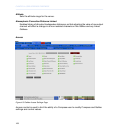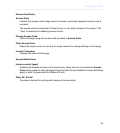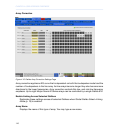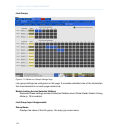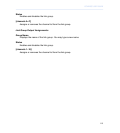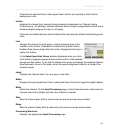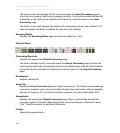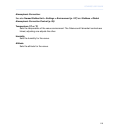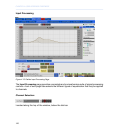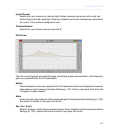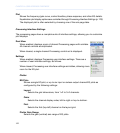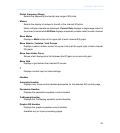
The button on the left displays the EQ curve and opens the Input Processing page to
show the most recently-used input processing controls. A dim yellow border indicates EQ
is disabled; a dim white border indicates the channel is currently viewed on the Input
Processing page.
The button on the right displays the Graphic EQ processing controls, and contains a “G”
when the graphic equalizer is enabled and has non-unity settings.
Summing Matrix
Displays the Summing Matrix page (see Summing Matrix (p. 135).)
Outputs Rows:
Processing Shortcuts
Displays the appropriate Output Processing page.
The button displays the EQ curve and opens the Output Processing page to show the
most recently-used output processing controls. A dim yellow border indicates EQ is disabled;
a dim white border indicates the channel is currently viewed on the Output Processing
page.
Equalization
Enables channel EQ.
Array Corr.
Displays the Array Correction page (see Array Correction (p. 110).) When a channel belongs
to an array correction group, the button label displays the model name of the loudspeaker
and size of the array. If no correction has been assigned, the button label reads “Edit.”
Atmospheric
Displays the appropriate Output Processing page. When a channel has atmospheric
correction applied, the button label displays the correction distance, otherwise it reads
“Edit.” See Environment for additional iformation.
Polarity
Selects the signal polarity.
116
CHAPTER 4: USER INTERFACE REFERENCE



